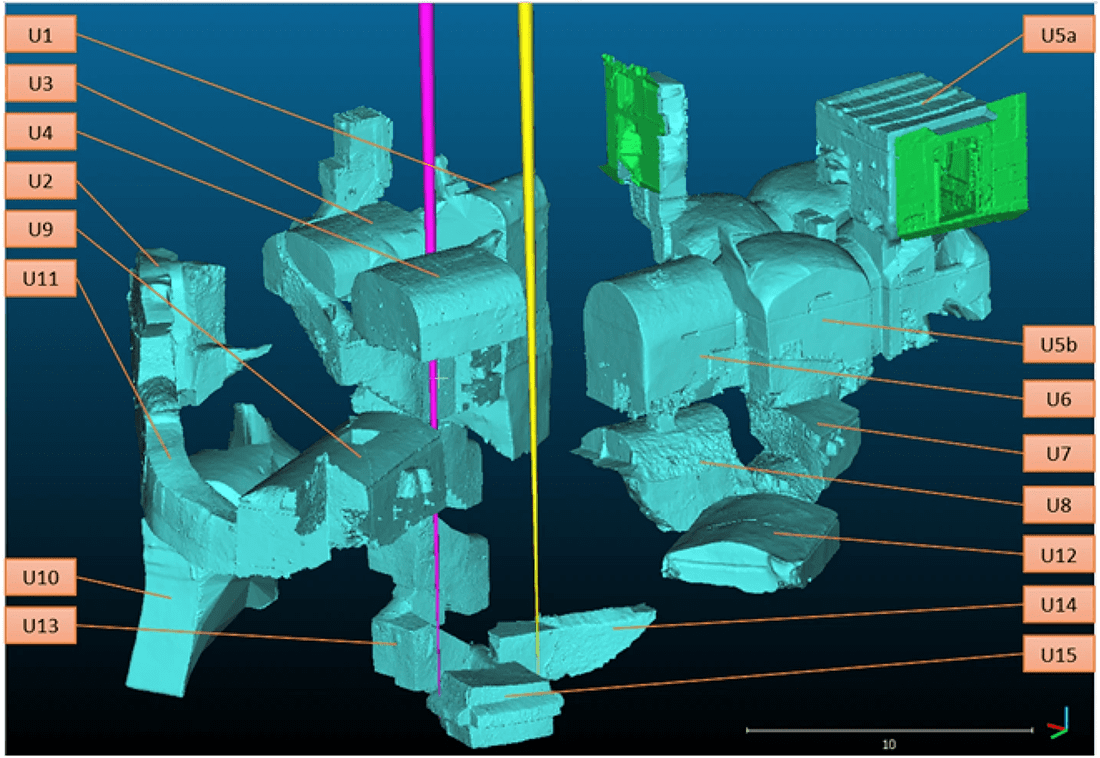For the first time, a team of researchers has discovered a hidden underground necropolis underneath the streets of Naples using muon tomography – essentially, cosmic ray particles.
In muon tomography, or muography, scientists use cosmic rays to map previously-inaccessible areas. Muon particles are negatively-charged particles produced by cosmic rays that collide with atoms in the Earth’s upper atmosphere. Around 10,000 muons reach Earth’s surface per square meter per minute. Muography uses these scattered rays to construct three-dimensional models from the information revealed as the particles pass through varying densities of obstructive objects, like walls or floors.
A team of international researchers from Italy and Japan used this technique to map the part of the remains of an ancient Greek city called Neapolis underneath Naples, largely inaccessible to archaeological excavations due to the high population density of the area.
“Remains of the ancient Neapolis with its buildings, streets, aqueducts and necropolis made by the Greeks starting from the second half of the first millennium BC are interred approximately ten meters below the current street level of the city of Naples,” the team wrote in their paper.
The map produced by the team. Image credit: Tioukov et al., Scientific Reports 2023
Muography is a great way to see through obstructive objects and has been used to study all sorts, from volcanoes to 14th-century Chinese fortress walls to a hidden room in the Great Pyramid of Giza.
A previous study looking at Neapolis, an ancient Hellenistic necropolis built by the Greeks in the fourth to third centuries BCE, hypothesized that there were more burial chambers to be found. The team was able to do so by using muon detectors 18 meters below street level inside an ancient cellar, which had been converted into a food cellar in the 19th century.
“The first challenge was to design a compact muon detector with high angular resolution, transportable in a narrow place and without access to the electricity grid,” Giovanni De Lellis of the Federico II University and the National Institute of Nuclear Physics (INFN) of Naples said in a statement.
“The detector we have developed is based on the technologies we use in the subnuclear physics experiments at CERN, and at the INFN Gran Sasso National Laboratories, which study the properties of neutrinos and search for dark matter.”
They were left for months, capturing around 10 million muons from which the team was able to produce a stereoscopic reconstruction.
“From the number of muons that arrive at the detector from different directions, it is possible to estimate the density of the material they have passed through,” lead author Valeri Tioukov, a researcher at the INFN of Naples, said. “We found an excess in the data that can only be explained by the presence of a new burial chamber.”
Fragments of nearby Greek burial chambers from ancient Neapolis. Image credit: Tioukov et al., Scientific Reports 2023
Similar necropolis chambers in the area contain ornate frescoes and sculptures left by wealthy Hellenistic families to honor their dead. The chamber has not yet been explored, other than by cosmic rays, of course.
The study was published in Scientific Reports.
Source Link: Hidden Ancient Underground Necropolis Discovered Using Cosmic Rays
